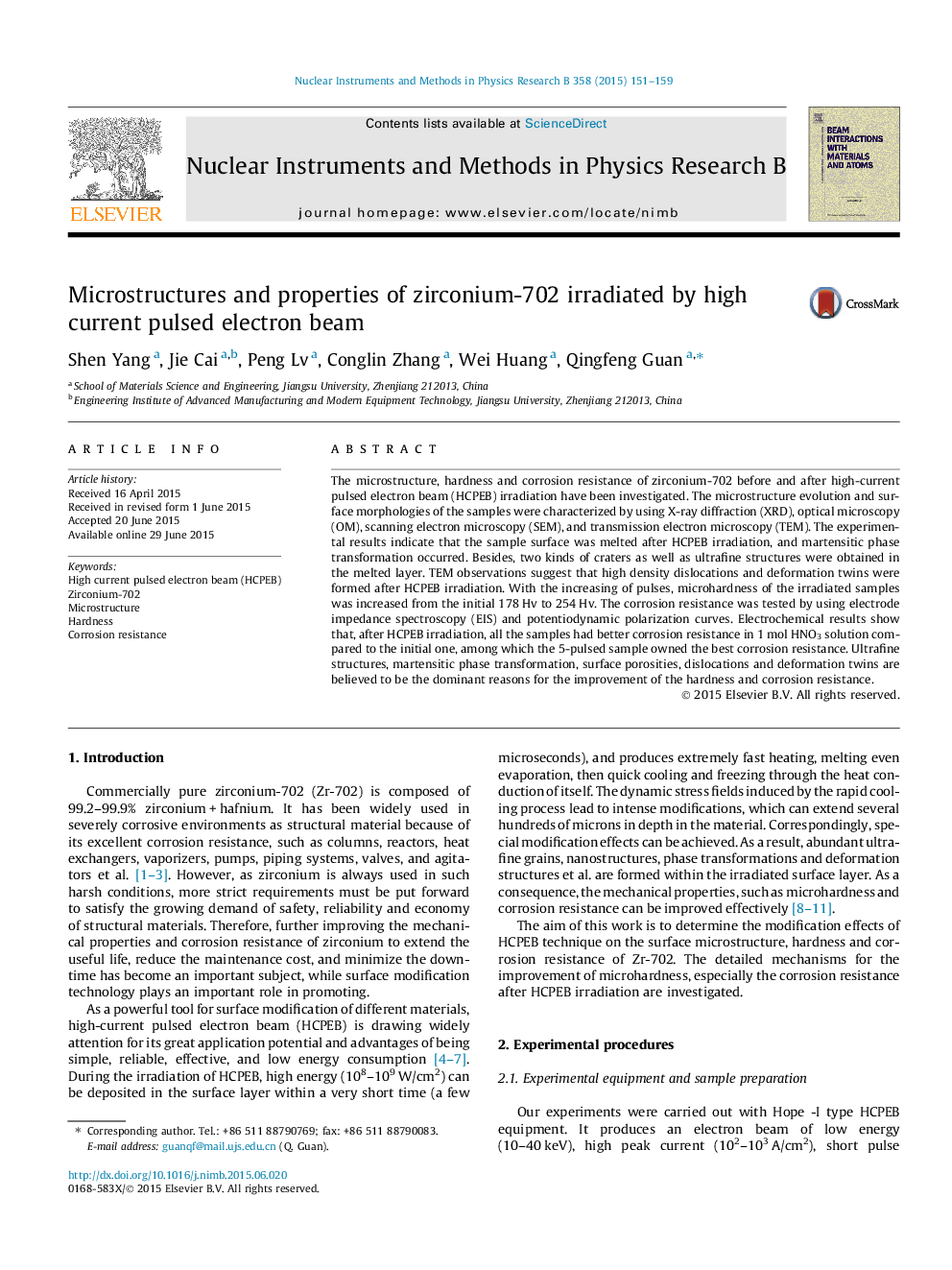| کد مقاله | کد نشریه | سال انتشار | مقاله انگلیسی | نسخه تمام متن |
|---|---|---|---|---|
| 1682654 | 1518662 | 2015 | 9 صفحه PDF | دانلود رایگان |
• Zirconium-702 irradiated by high current pulsed electron beam was investigated.
• Irradiated surface was melted and martensitic phase transformation occurred.
• High density dislocations and deformation twins were formed in melted layer.
• Micropores and ultrafine structures were also obtained on the irradiated surface.
• Microhardness and corrosion resistance were improved after HCPEB irradiation.
The microstructure, hardness and corrosion resistance of zirconium-702 before and after high-current pulsed electron beam (HCPEB) irradiation have been investigated. The microstructure evolution and surface morphologies of the samples were characterized by using X-ray diffraction (XRD), optical microscopy (OM), scanning electron microscopy (SEM), and transmission electron microscopy (TEM). The experimental results indicate that the sample surface was melted after HCPEB irradiation, and martensitic phase transformation occurred. Besides, two kinds of craters as well as ultrafine structures were obtained in the melted layer. TEM observations suggest that high density dislocations and deformation twins were formed after HCPEB irradiation. With the increasing of pulses, microhardness of the irradiated samples was increased from the initial 178 Hv to 254 Hv. The corrosion resistance was tested by using electrode impedance spectroscopy (EIS) and potentiodynamic polarization curves. Electrochemical results show that, after HCPEB irradiation, all the samples had better corrosion resistance in 1 mol HNO3 solution compared to the initial one, among which the 5-pulsed sample owned the best corrosion resistance. Ultrafine structures, martensitic phase transformation, surface porosities, dislocations and deformation twins are believed to be the dominant reasons for the improvement of the hardness and corrosion resistance.
Journal: Nuclear Instruments and Methods in Physics Research Section B: Beam Interactions with Materials and Atoms - Volume 358, 1 September 2015, Pages 151–159
